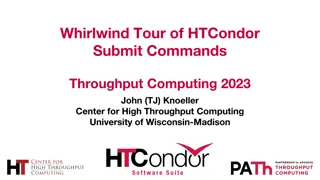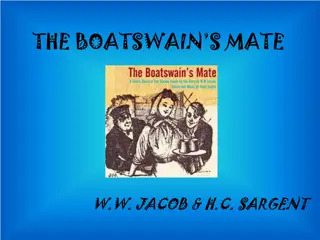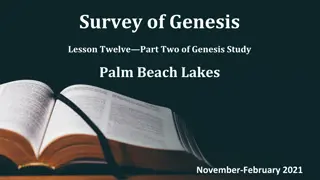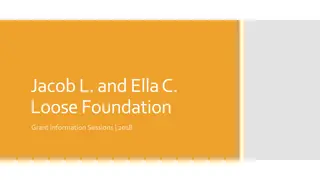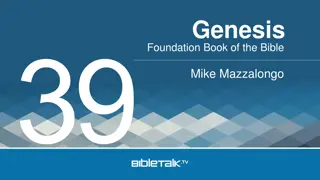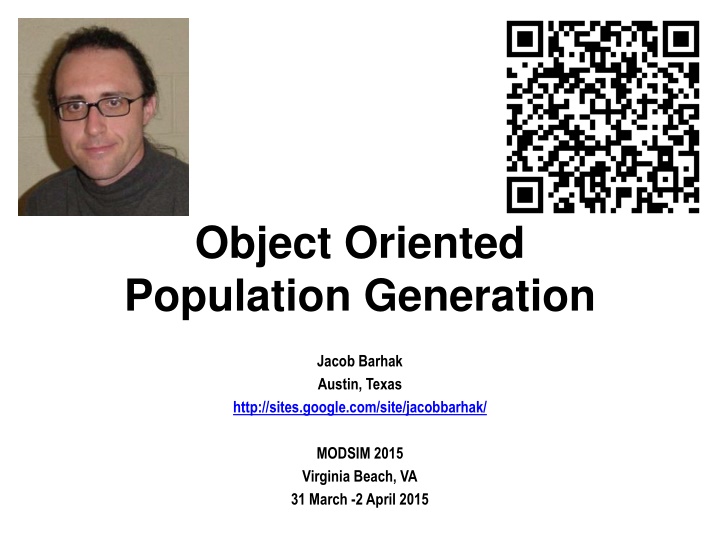
Object-Oriented Population Generation and Clinical Trials Insights
Explore the innovative approach of object-oriented population generation through tools like MIST and INSPYRED, offering insights into modeling clinical trial populations based on statistics and objectives. Learn about the process and motivation behind generating synthetic populations to mimic real-world data.
Uploaded on | 0 Views
Download Presentation

Please find below an Image/Link to download the presentation.
The content on the website is provided AS IS for your information and personal use only. It may not be sold, licensed, or shared on other websites without obtaining consent from the author. If you encounter any issues during the download, it is possible that the publisher has removed the file from their server.
You are allowed to download the files provided on this website for personal or commercial use, subject to the condition that they are used lawfully. All files are the property of their respective owners.
The content on the website is provided AS IS for your information and personal use only. It may not be sold, licensed, or shared on other websites without obtaining consent from the author.
E N D
Presentation Transcript
Object Oriented Population Generation Jacob Barhak Austin, Texas http://sites.google.com/site/jacobbarhak/ MODSIM 2015 Virginia Beach, VA 31 March -2 April 2015
Population Generation Goal Generate synthetic population to mimic statistics Heterogeneity = generate individuals Multiple characteristics per individual Allow correlations Allow restrictions Correlated IndividualID IndividualID Male Male Age Age BP BP 0 0 0 0 50 50 140 140 1 1 1 1 45 45 135 135 2 2 0 0 22 22 120 120 Generation Code / Equations 3 3 1 1 85 85 145 145 4 4 1 1 14 14 125 125 Restrict Age
Population Generation Motivation Possible populations to model: Clinical trials Government entities countries / states / cities Companies Technical uses: Initialization: Agent based modeling Monte Carlo micro simulation Discrete Event Simulation Exploring distributions With Correlations With Restrictions Why Object Oriented? US Diabetics US Diabetics
Clinical Trial Populations: Background The First Table in a Clinical Trial publication typically contains Population Statistics Summary Data Only: Mean (SD) / Median (IQR) Limited information about distribution Inclusion/exclusion criteria skew the distribution Control Intervention Age 53.3 (8.6) 53.2 (8.6) % Male 61.9% 59.3% Smoke 31% 30% Systolic Blood Pressure (mmHg) 135(20) 135(20) Total Cholesterol (mmol/L) 5.4 (1.02) 5.4(1.12) Example: Excerpt from Table 1 in UKPDS 33
INSPYRED MIST INSPYRED MIST can regenerate mock populations from Table 1 in clinical trials INSPYRED Bio Inspired Computation by Aaron Garrett Table 1 MIST Generate MIcro Simulation Tool by Jacob Barhak Only publicly available summary data is used No need to have access to restricted data
Population Generation Process Generation Rules: Define how to generate a single individual Test if individual fits the inclusion/exclusion criteria Define ties and correlations between characteristics INSPYRED MIST Monte Carlo Expression Compiler Evolutionary Computation Selection Result Result Population Converges to Objectives Objectives: Define aggregate targets for the entire population Reduce random generation error Handle skewed distributions to fit target
INSPYRED Evolutionary Computation Candidates Generator Evaluator 3.1 7.5 4.2 5.2 Generations / Epocs Selector + = Repeat Variators Parents Crossover Mutation Terminator Best Solution
Rules Example Out of Order execution: Calculation order is different than definition order Calculation Order Male Population A: Rules: Age ~ Gaussian (50 + 2*Male,5) Male ~ Bernoulli (0.5) Height ~ Gaussian(1.7+0.1*Male,0.1) Weight ~ (Age+Uniform(0,20))*(Height-0.75) Age Height Weight
Objectives Example Population C: Objectives: Objective #1: Filter Criteria: 1 Statistics Expression: Weight/Height**2 Function: MEAN Target Value: 25 Weight:1 In Simple Words: Ask for the Mean BMI to be 25 for the entire population
Object Oriented Inheriting Rules Objectives Data Inheritance from Multiple populations Multiple levels build an inheritance tree Override possible
Simple Inheritance Example Population D Inheritance: (Population A, Rules) (Population C, Objectives) Pop D: Age (A) Male (A) Height (A) Weight (A) Objective 1 (C) Result: Rules Objectives Population with Age, Weight, Height characteristics where the mean BMI ~ 25 Pop A: Age (A) Male (A) Height (A) Weight (A) Pop C: Objective 1 (C)
Data Inheritance is Different Similar to prototype inheritance in other languages Data inheritance forces generation Invoked before inheritance Objectives and rules are not inherited The generated data is converted to rules Aimed at handling real data in the future Electronic Medical Records (EMR) Previous simulation data can be reintroduces
Simple Example Population B: Rules: Age ~ Table ([[Mod(IndividualID,3),[]]], [50,60,40]) Equivalent to the following data table: Individual ID Age 0 50 1 60 2 40
Data Inheritance Example Pop E: Age (Data D) Male (Data D) Height (Data D) Weight (Data D) Pop E: Age (B) Male (Data D) Height (Data D) Weight (Data D) Population E Inheritance: (Population D, Data) (Population B, Rules) Generate Data Rules Pop D: Age (A) Male (A) Height (A) Weight (A) Objective 1 (C) Pop B: Pop B: Age (B) Age (B) Generate After Generation: E looks like D with Age override from B Rules Objectives Pop A: Age (A) Male (A) Height (A) Weight (A) Pop C: Objective 1 (C)
Object Oriented Advantages Code Reusability Linking rather than copying rules/objectives Population building blocks enable Modular Modeling Using overrides Missing Information Default Values Derived equations Hypothesis handling Adding variations for unknowns Towards Big Data Handling Individual data Data inheritance UK Non Diabetics US Diabetics US Non Diabetics UK Diabetics UK Non Diabetics 4 combinations US Diabetics
Future Work A new version of the MIcro Simulation Tool (MIST) includes Object Oriented population generation The Reference Model for Disease Progression will inherit populations for efficiently generate many populations Object oriented population generation is essential for large projects such as replicating population from ClinicalTrials.gov
Acknowledgments Deanna J.M. Isaman - who is the spirit behind the great ideas. She taught me my first steps in disease modeling Morton Brown & William H. Herman for guidance, critical feedback, and growth environment Aaron Garrett for his responsiveness and help with starting with Inspyred he saved me at least a months work if not two by sending me solution code within one day. All those who developed free software used and supported it: including Python, Anaconda, Spyder, numpy, SciPy, nose, winpdb, Star Cluster, Ubuntu, Sun Grid Engine The legacy IEST modeling framework was supported by the Biostatistics and Economic Modeling Core of the MDRTC (P60DK020572) and by the Methods and Measurement Core of the MCDTR (P30DK092926), both funded by the National Institute of Diabetes and Digestive and Kidney Diseases. The modeling framework was initially defined as GPL and was funded by Chronic Disease Modeling for Clinical Research Innovations grant (R21DK075077) from the same institute. MIST is based on IEST. The Reference Model and MIST were developed independently without financial support
Questions? Jacob Barhak http://sites.google.com/site/jacobbarhak/




